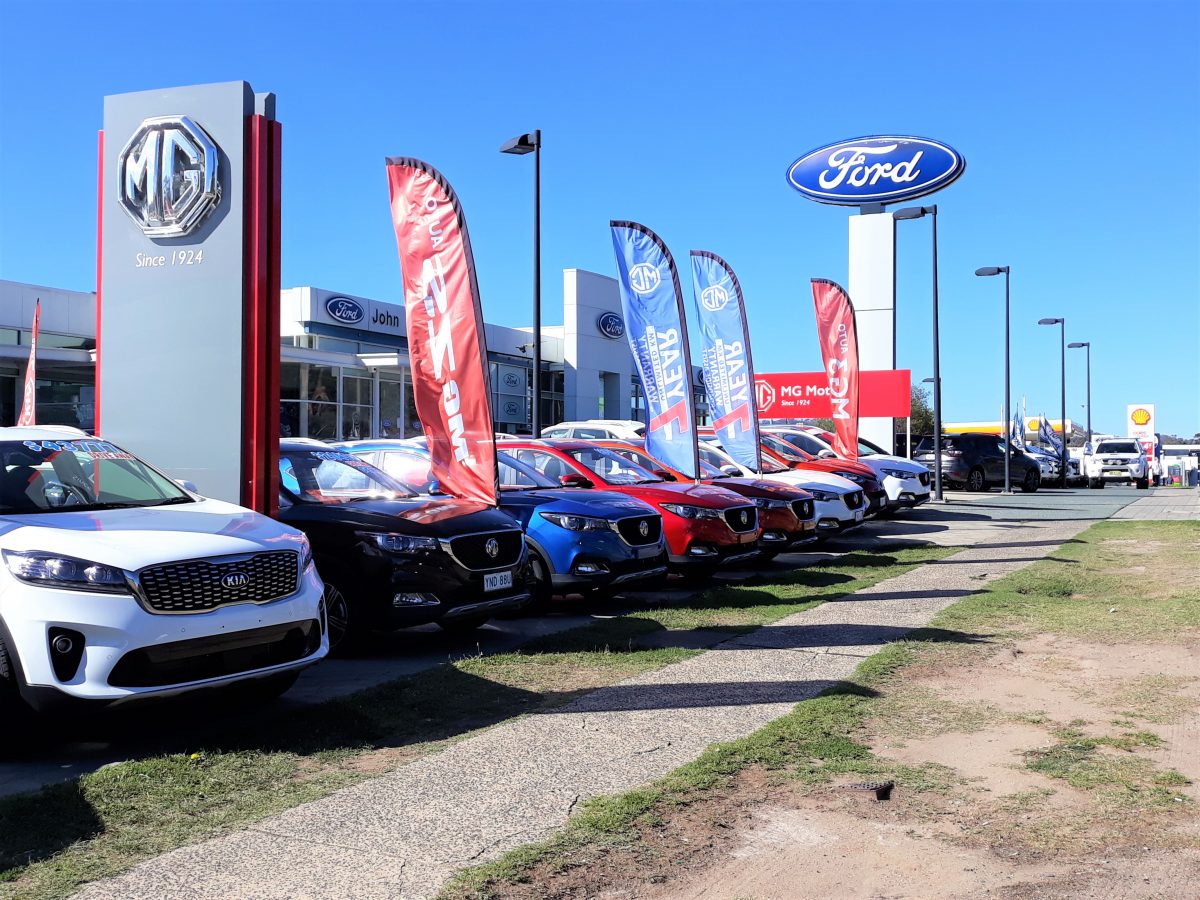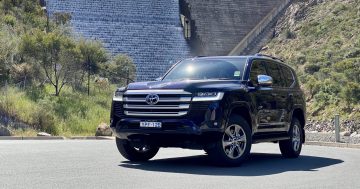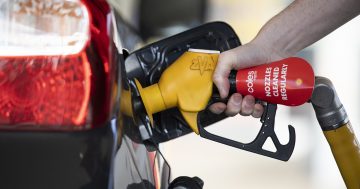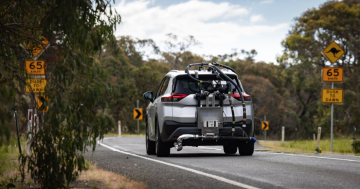
Melrose Drive – home to many of Canberra’s car dealers. Photo: James Coleman.
Opposition Leader Peter Dutton has promised to halve the fuel excise for one year to save the average motorist about $14 a week should he win the election in May. However, Australia’s peak car dealership body says this doesn’t go far enough.
The Australian Automotive Dealers Association (AADA), based in Canberra, is calling for a “root and branch review of all of Australia’s automotive taxes” – starting with the Luxury Car Tax (LCT).
It also warns more cars about to be slammed with a hefty price increases due to upcoming changes to the LCT.
“We consider these to be outdated taxes, which are a relic from an era when Australia manufactured vehicles here,” CEO James Voortman said in a statement.
“Particularly the Luxury Car Tax which often applies to more efficient vehicles and applies to optional features which discourage consumer uptake of safety features.”
The LCT was originally introduced on 1 July 2000 at the same time as GST. It was designed to replace the wholesale sales tax, which had applied to luxury vehicles since the 1980s and ensured imported luxury cars weren’t priced lower than locally made vehicles.
For this financial year (2024/25), LCT applies to vehicles worth $80,567 or above (before on-road costs) or $91,387 and above for low-emission vehicles.
Cars over these thresholds are hit with a 33 per cent tax rate.
It also applies not just to brand-new imported vehicles but also to demonstrators sold by dealers up to two years old.
At the moment, a low-emission vehicle is classified as one with a claimed fuel-consumption figure under 7 litres per 100 km. But from 1 July 2025, this definition changes to only include those vehicles that consume 3.5 litres per 100 km of fuel or less.
This means the LCT will apply to all hybrid vehicles worth $80,567 or more, affecting brands like Lexus and Land Rover.

Many Lexus hybrids will be hit by the changes to LCT. Photo: James Coleman.
Budget papers reveal the Federal Government is expected to receive $1.55 billion this financial year from the tax, as well as existing import tariffs on passenger vehicles.
Around 2010, the Henry Tax Review, commissioned by the Rudd government, recommended the abolition of the LCT because of its narrow base, adding that “taxing luxury goods is also an ineffective and arbitrary means of redistributing economic resources”.
The report further noted that the LCT “falls on people with a preference for relatively expensive cars, but not on those with a preference for diamonds, fur coats or yachts”.
Bodies like the Federal Chamber of Automotive Industries and AADA have lobbied for the abolition of the LCT long before the Australian car manufacturing sector wound up in 2017.
They say it penalises consumers who would opt for the extra safety features available in more expensive models but decide against it to avoid going over the threshold.
“The AADA has consistently called for the abolition of both the luxury car tax and the passenger vehicle tariff, particularly as we no longer manufacture cars in Australia, leaving no industry to protect,” Mr Voortman told Region this week.
“Unfortunately, calls to abolish these taxes have fallen on deaf ears with both sides of politics preferring to bank the receipts from these outdated automotive taxes.”
Mr Voortman says the industry is now looking at options that might be more palatable to the Federal Government.
“These include increasing the threshold to an amount which reflects a true luxury vehicle, excluding accessories and safety features from the calculation of the final amount, and exempting all fuel-efficient vehicles.
“As vehicles become more fuel efficient and fuel excise revenue starts to dry up, it is critical that the government launches a root and branch review of all of Australia’s automotive taxes.”
Original Article published by James Coleman on Riotact.






